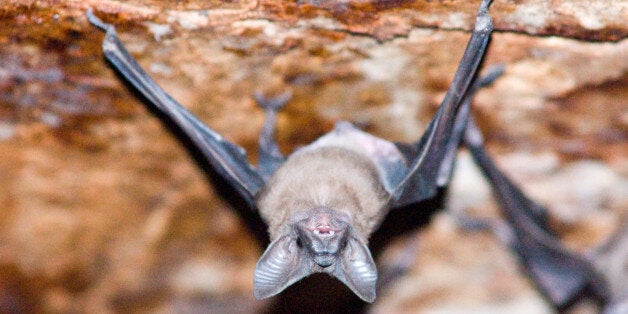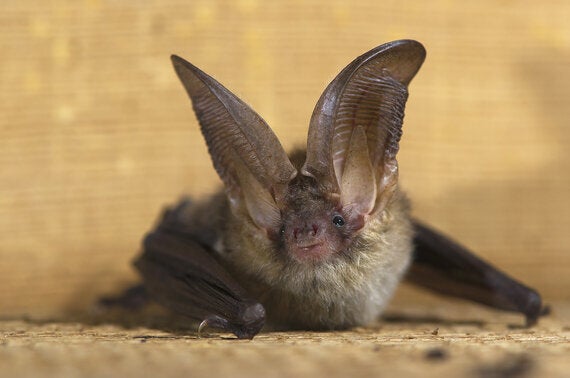
Give a Bat a Home is the latest environmental campaign run by the Canal & River Trust (CRT) which highlights the endangerment of bat species around the country. Because of the increase of urbanisation, many bats in the UK are losing their natural homes and the CRT is working tirelessly to preserve these creatures' environments. Responsible for protection its approximately 2,000 mile waterway network, much of which is home to the country's vast bat population, the CRT is actively addressing the destruction of bats' natural habitat, specifically the disappearance of their roosting environments over the past century. In response to the British bat population's endangerment, the CRT is now creating "bat boxes," a roosting environment for bats to live in safely.
The natural habitat of bats is water and so they naturally reside on or near canals, lakes, and rivers, roosting together under bridges, in tunnels, culverts, trees, and any man-made structures, to include crevices, drainage holes, and gaps in cement and between bricks. As most all species of British bats are small, they love to roost under stone and concrete bridges where they can squeeze their tiny bodies into crevices that are at least 400mm deep and between 17mm and 35mm wide. All seventeen species of bat in the United Kingdom are protected by law and it is illegal to kill, injure or disturb bats and to obstruct their access to or damage their roosts. The law defines the roost as any structure or space used by bats for shelter or protection, even if they are seasonally absent from a particular roost.

The Soprano Pipistrelle, Photo credit: Canal & River Trust
In need of different roosting conditions throughout year, bats will often move around to find a roost that meets their particular needs. Some bats prefer hollow trees, others like caves, while some use both types of roots at different times of the year. Urban bats will often shelter in buildings, hanging within the crevices of concrete and brick, behind tiles and boarding, and even in roofs. During the summer, female bats gather in a maternity roost to have their offspring. In the winter, bats hibernate in roosts found in trees, built structures and in underground sites. Bats may also roost in bat boxes.
Like bees, bats are also pollinators because they hunt insects that are attracted to flowers from which they transfer seeds and pollen to other locations. The pollination of plants by bats is called chiropterophily. Aside from producing food, some bats play a critical role in spreading the seeds of trees and other plants around the planet, a vitally needed role in today's reality of the vast ecological destruction of forests and other green spaces. Here are just a few of the valuable foods and derivatives that humans enjoy due to bat-adapted plants: dates, vanilla, bananas, breadfruit, guavas, kapok, Iroko timber, balsa wood, sisal, Tequila, chocolate, and even natural chicle (later known as chewing gum)!
In contradistinction to common myth, bats are not at all blind and can see almost as well as humans. They can also see in the dark. However at night they use echolocation, a special sonar which allows them to function through echoes. Bats usually have only one offspring per year and can live for up to thirty years. They sleep upside-down because the tendons in their legs and feet will grip more with the weight of their body, allowing them to spread their wings. Fun fact: bat knees bend in the opposite direction of human knees.
Aside from giving us food, bats protect us from insects which assist agriculture in keeping detrimental bugs away from crops. For instance, the Brazilian free-tailed bat (Tadarida brasiliensis) in south central Texas is vital to cotton farming for this very reason. Because bats eat so many insects in some regions, they can also reduce the need for pesticide sprays which is good for the planet. UK bats range from the Pipistrelle (4cm wingspan and lighter than a pound coin) to the Noctule (35cm wingspan, 40 grams). A pipistrelle eats approximately 1 million midges which help to control disease and protect agriculture.

The Brown Long-Eared Bat, Photo credit: Canal & River Trust
Reaching out to the public the CRT is asking people to help bring the bat population back by engaging in responsible co-habitation through these simple actions: to plant bright nectar-filled plants to attract the insects that bats eat; to also include white or pale flowers which stand out in the dark in order to attract insects at night; to use as little artificial light as possible so as not to discourage bats from visiting or nesting; to keep an active pond with plants which are excellent breeding grounds for insects; and to buy a bat box.
The Canal & River Trust's Give a Bat a Home campaign aims to raise donations and awareness of this issue, and to build bat boxes where bats can roost and create families. The CRT is also encouraging people of all ages to become a volunteer with the national bat monitoring campaign. This is the CRT's first national bat monitoring scheme which seeks to protect the bat species by working with local community groups to install roosts and monitor bat populations.
As of today, 25% of the world's bats are threatened with extinction and we know of twelve bat species that have already become extinct, among with is the Puerto Rican flower bat. In the UK, bats face threats ranging from predation to crime and loss of habitat. Every one of us can all make a difference through donations and cooperative action.
